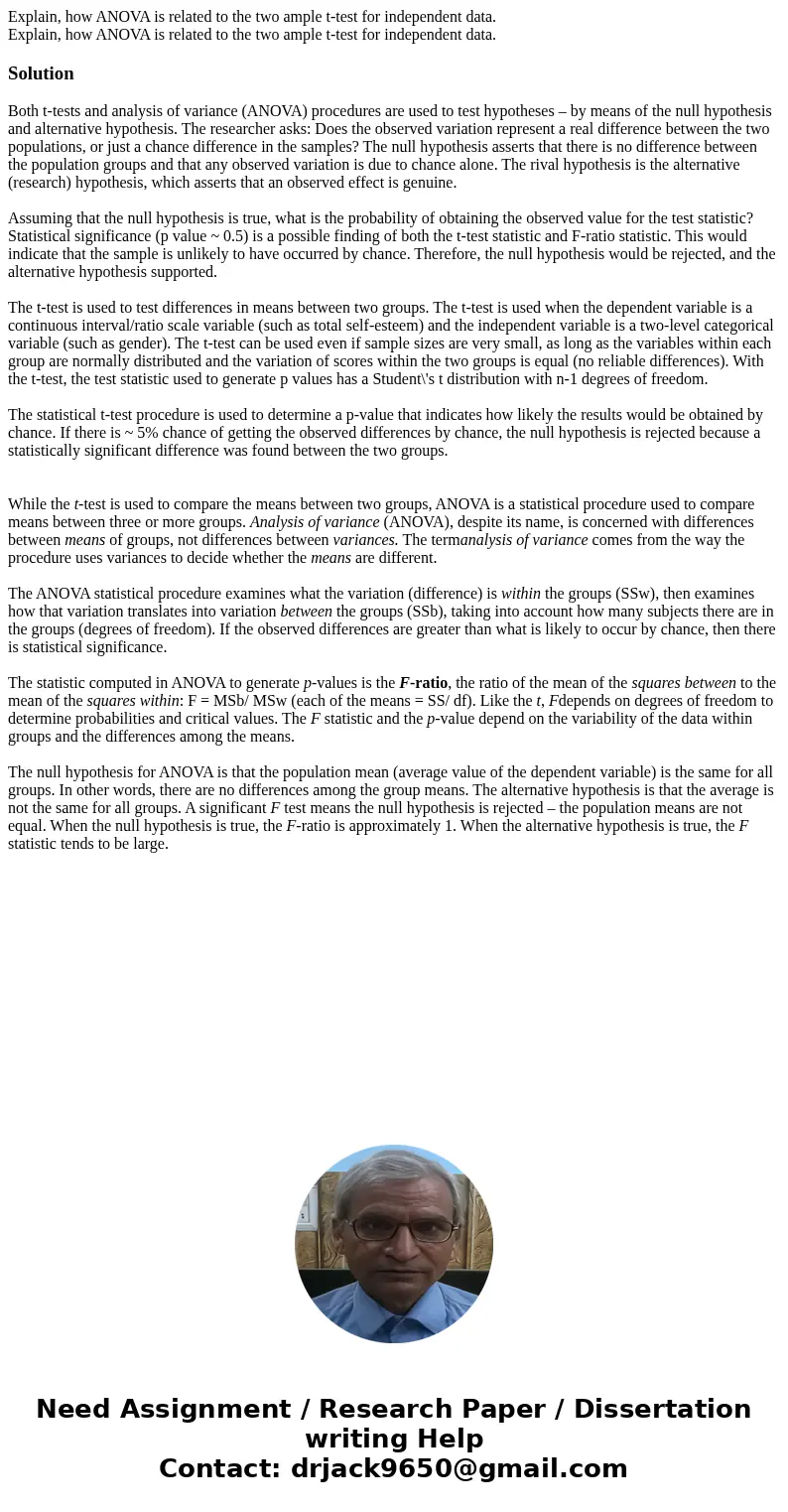Explain how ANOVA is related to the two ample ttest for inde
Solution
Both t-tests and analysis of variance (ANOVA) procedures are used to test hypotheses – by means of the null hypothesis and alternative hypothesis. The researcher asks: Does the observed variation represent a real difference between the two populations, or just a chance difference in the samples? The null hypothesis asserts that there is no difference between the population groups and that any observed variation is due to chance alone. The rival hypothesis is the alternative (research) hypothesis, which asserts that an observed effect is genuine.
Assuming that the null hypothesis is true, what is the probability of obtaining the observed value for the test statistic? Statistical significance (p value ~ 0.5) is a possible finding of both the t-test statistic and F-ratio statistic. This would indicate that the sample is unlikely to have occurred by chance. Therefore, the null hypothesis would be rejected, and the alternative hypothesis supported.
The t-test is used to test differences in means between two groups. The t-test is used when the dependent variable is a continuous interval/ratio scale variable (such as total self-esteem) and the independent variable is a two-level categorical variable (such as gender). The t-test can be used even if sample sizes are very small, as long as the variables within each group are normally distributed and the variation of scores within the two groups is equal (no reliable differences). With the t-test, the test statistic used to generate p values has a Student\'s t distribution with n-1 degrees of freedom.
The statistical t-test procedure is used to determine a p-value that indicates how likely the results would be obtained by chance. If there is ~ 5% chance of getting the observed differences by chance, the null hypothesis is rejected because a statistically significant difference was found between the two groups.
While the t-test is used to compare the means between two groups, ANOVA is a statistical procedure used to compare means between three or more groups. Analysis of variance (ANOVA), despite its name, is concerned with differences between means of groups, not differences between variances. The termanalysis of variance comes from the way the procedure uses variances to decide whether the means are different.
The ANOVA statistical procedure examines what the variation (difference) is within the groups (SSw), then examines how that variation translates into variation between the groups (SSb), taking into account how many subjects there are in the groups (degrees of freedom). If the observed differences are greater than what is likely to occur by chance, then there is statistical significance.
The statistic computed in ANOVA to generate p-values is the F-ratio, the ratio of the mean of the squares between to the mean of the squares within: F = MSb/ MSw (each of the means = SS/ df). Like the t, Fdepends on degrees of freedom to determine probabilities and critical values. The F statistic and the p-value depend on the variability of the data within groups and the differences among the means.
The null hypothesis for ANOVA is that the population mean (average value of the dependent variable) is the same for all groups. In other words, there are no differences among the group means. The alternative hypothesis is that the average is not the same for all groups. A significant F test means the null hypothesis is rejected – the population means are not equal. When the null hypothesis is true, the F-ratio is approximately 1. When the alternative hypothesis is true, the F statistic tends to be large.

 Homework Sourse
Homework Sourse